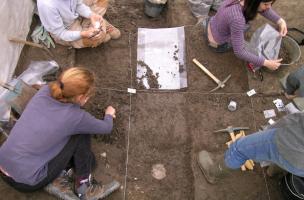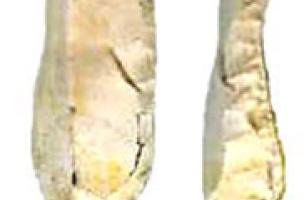You are here
Under Montpellier, the last great hunters of the Languedoc region
In advance of work on line N° 2 of the Montpellier tramway, an excavation, curated by the Regional Archaeology Service, was carried out at Fontaine de Pila street by archaeologists from INRAP and the Centre National de Recherche Scientifique (CNRS). Together, they discovered the oldest traces of human occupation in Montpellier, dating back to well before the creation of the city!
11,500 years ago, on the bank of the Verdanson River, a group of hunters set up their camp. A stone tool kit they abandoned is characteristic of the Epipalaeolithic, a purely Palaeolithic culture that existed just after the disappearance of reindeer, 12,000 years ago.
Hunters at the end of the Palaeolithic in Montpellier
The raw materials used (mostly flint, but also some quartz) are very diverse and of varied provenance. Detailed study of these objects will allow archaeologists to reconstruct the movements of these hunters across their territory.
Faunal remains are abundant in the camp. They include red deer, aurochs, wild boar, ibex and wild ass (Equus hydruntinus). Though reindeer were still present in the Final Magdalenian period (12,000 years ago), they had already deserted Mediterranean France.
These few elements indicate a rather temperate (forested) climate. The remains of a few smaller animals (rabbit and hare) were also found, along with numerous fish remains. This new excavation will contribute fundamental data about the climate and environment between the end of the Ice Age and to-day.
One of the rare Epipalaeolithic sites in the Eastern Languedoc region


Mahaut Tyrrell
Media communication
Inrap, media partnerships and relations
+33 6 07 40 59 77
mahaut.tyrrell [at] inrap.fr


